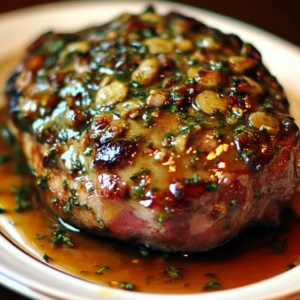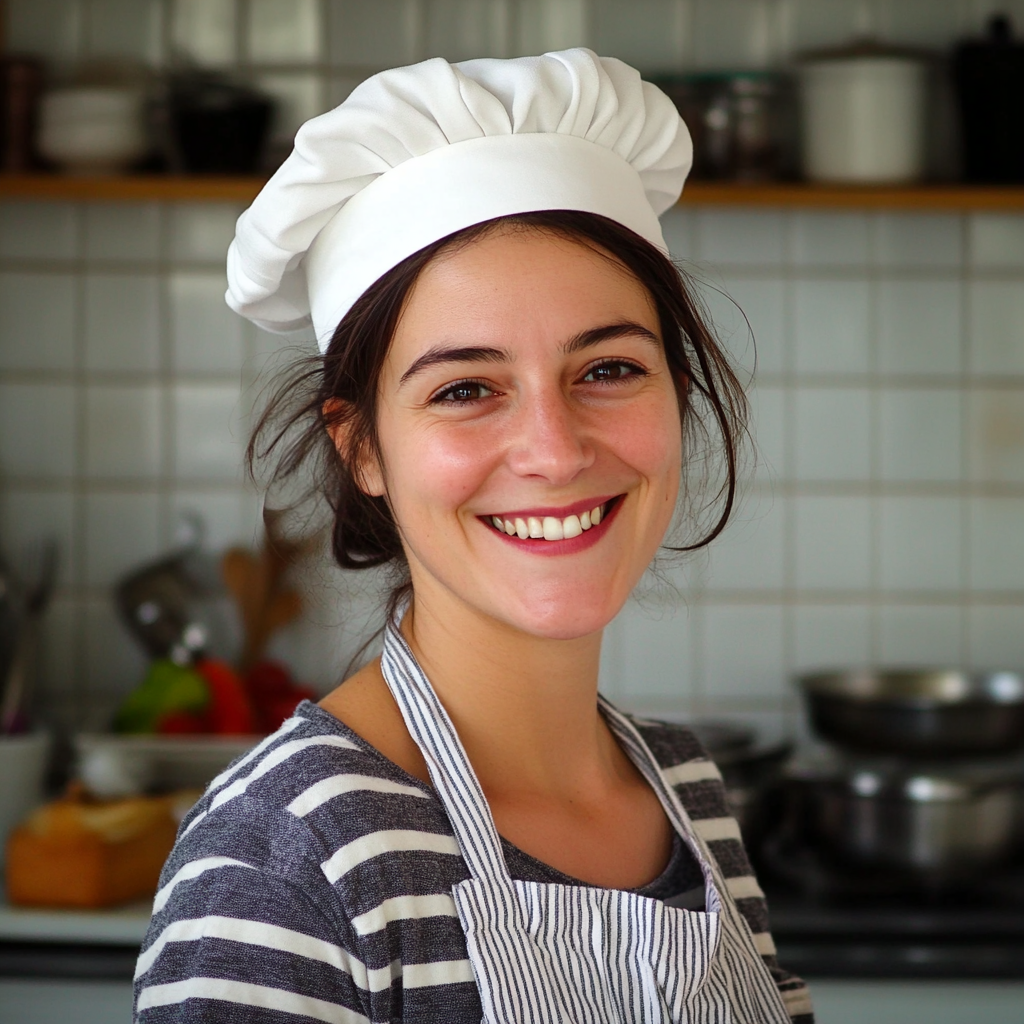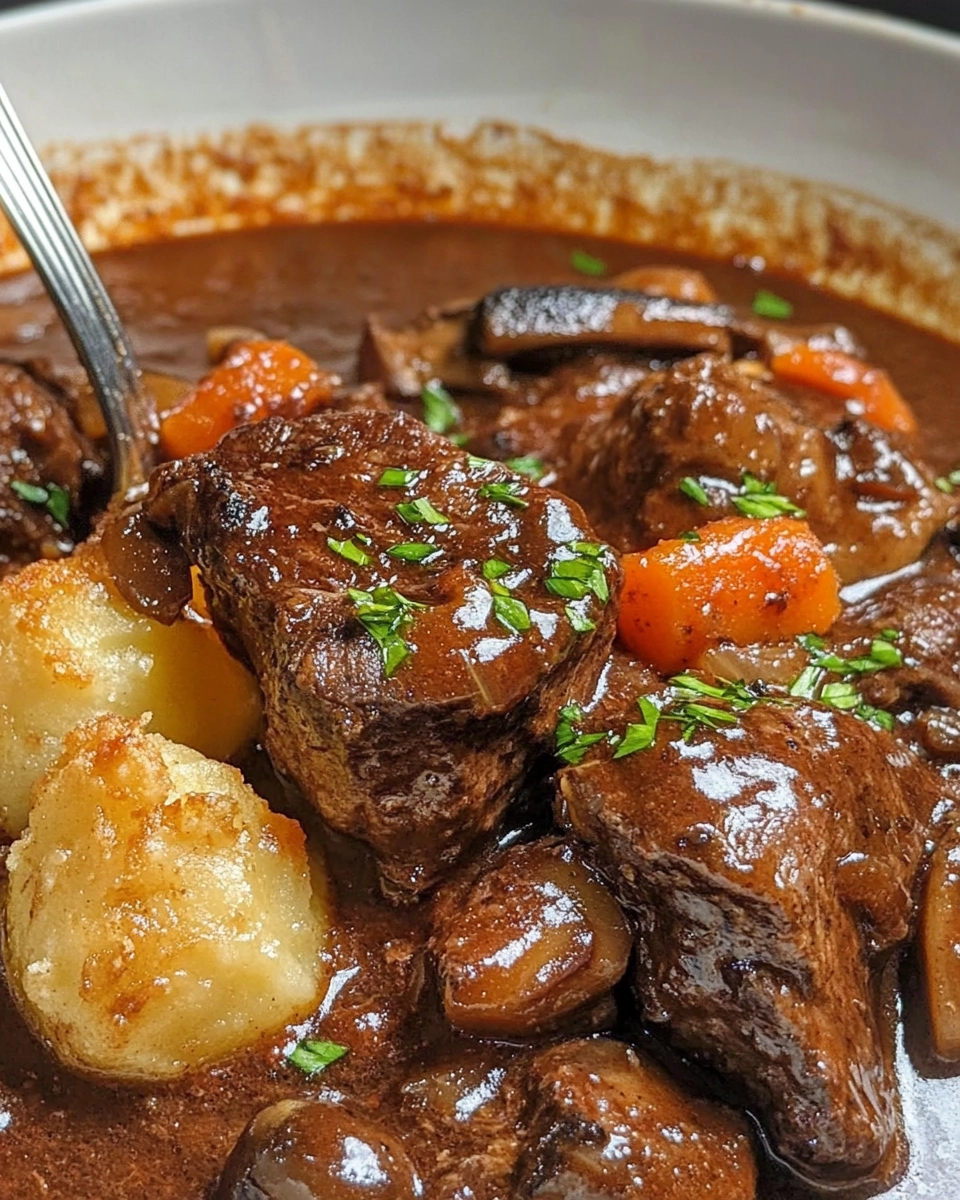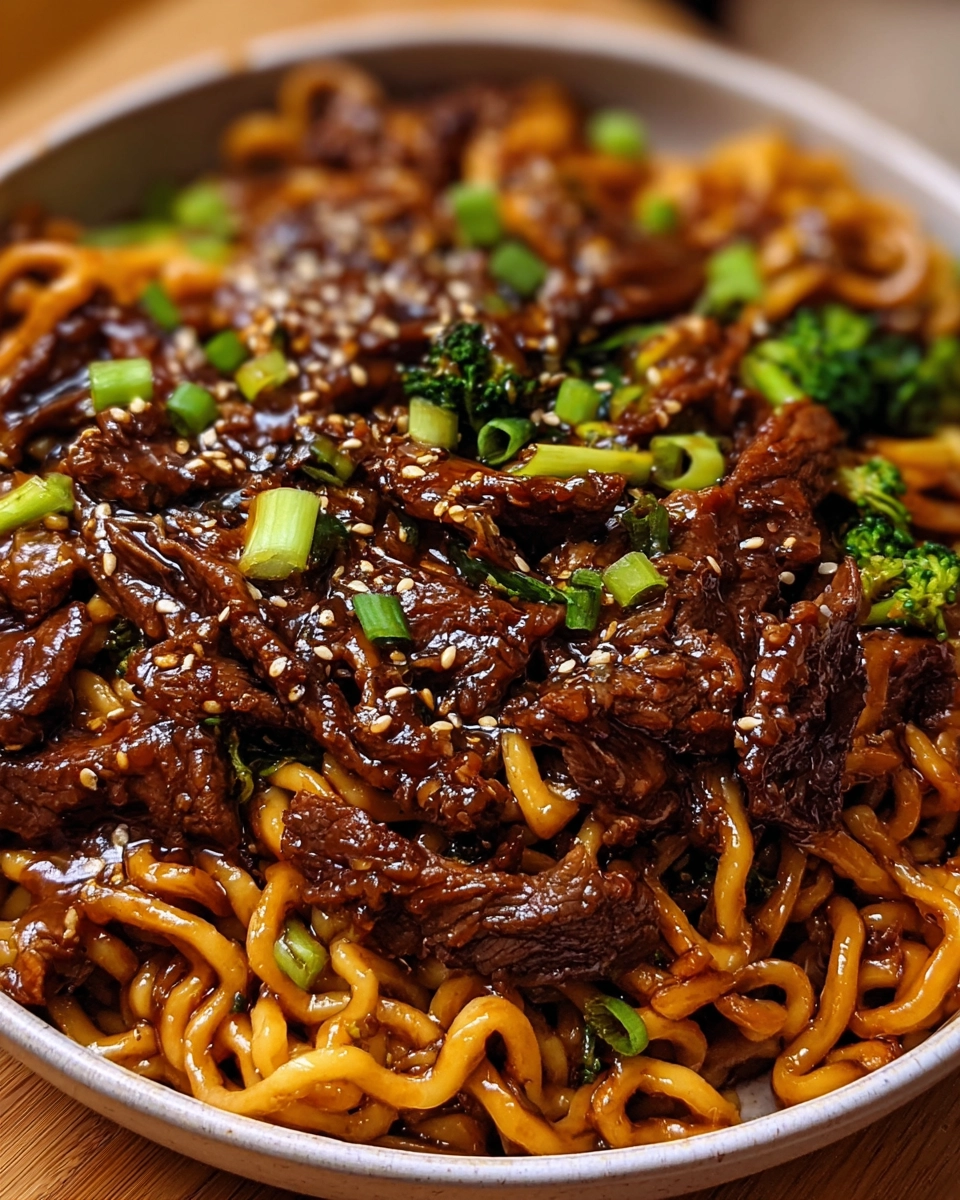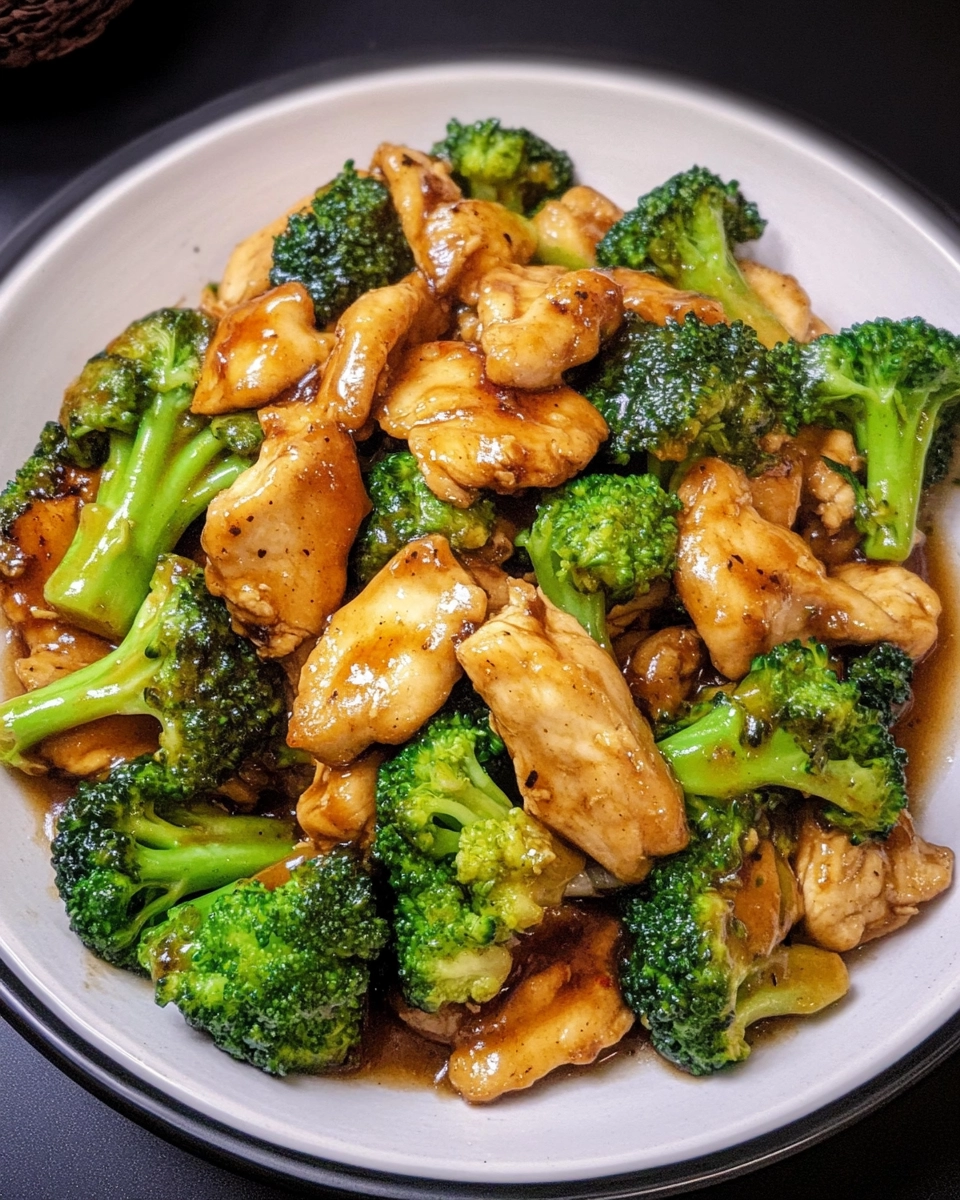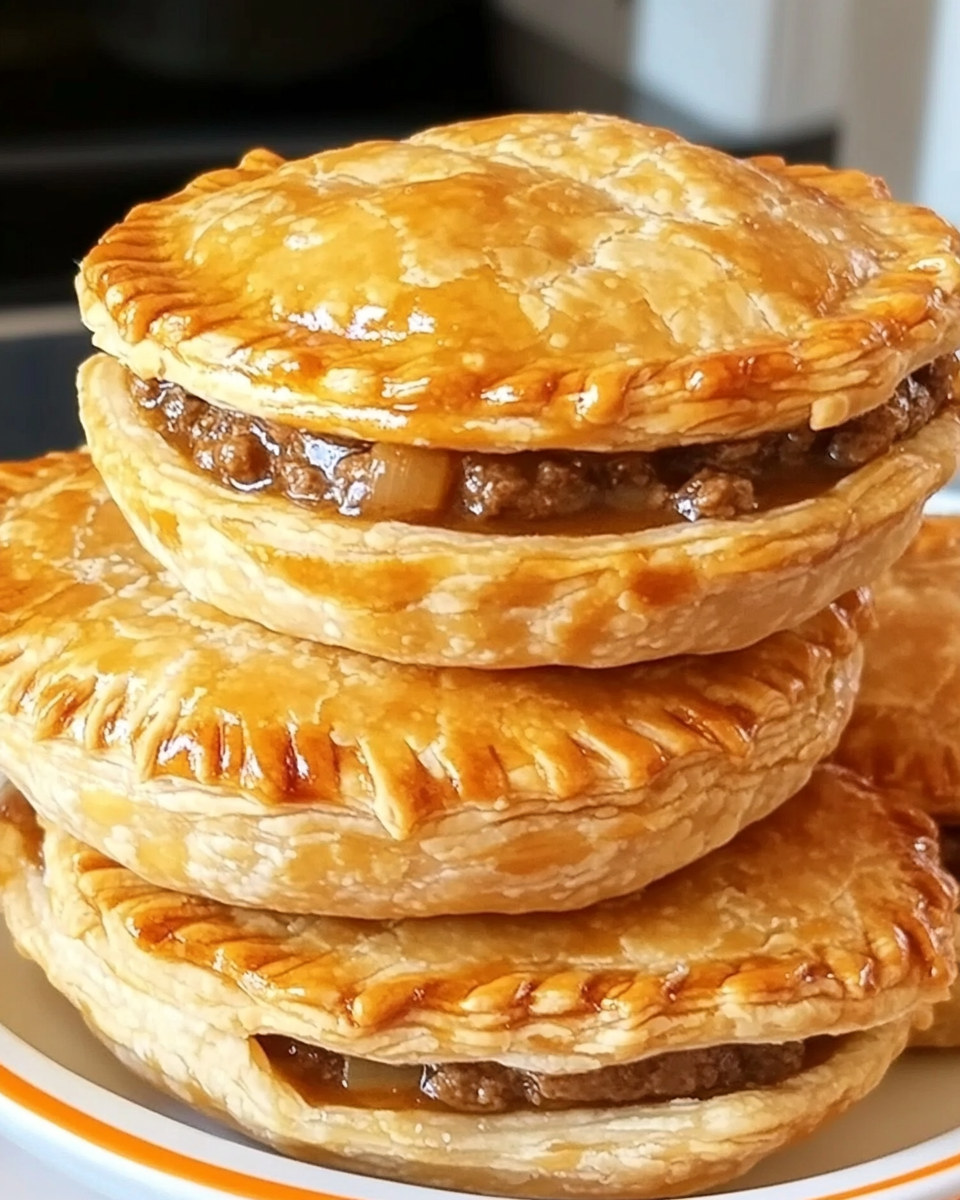My name’s Maggie Rae Donovan, and I’m a 42-year-old home cook living just outside of Asheville, North Carolina. I’m not a classically trained chef. I never went to culinary school, and you won’t catch me quoting the greats from glossy cookbooks. But I’ve spent the last 25 years stirring, sizzling, baking, burning sometimes, and falling madly in love with food in my own little kitchen. Cooking has always been more than recipes to me. It has been about memory, family, and the magic that happens when a meal brings people together.
My journey into cooking started in my grandmother’s kitchen, where butter was measured with the heart and food was the glue that kept generations close. I was only six when I stood on a chair, peeking over the counter as she folded biscuit dough with such grace it felt like a magic trick. That moment lit a spark. Food wasn’t just fuel, it was comfort, love, and connection.
Life carried me through nursing shifts, raising two daughters, and moving more times than I can count. But the kitchen was always my anchor. On tight-budget days, I learned to stretch ingredients into something creative and delicious. On celebrations, I pulled out all the stops with spreads that filled the table and hearts alike. Some of my best recipes came from mistakes, like too much lemon in a cream sauce turning into a zesty favorite, or the time I crushed pretzels to replace breadcrumbs and accidentally created my family’s beloved “crunchy chicken.” Cooking taught me that perfection wasn’t the goal, connection was.
Now, my days are filled with sharing this love of cooking—through my blog, potlucks, or simply by dropping a warm loaf of banana bread on a neighbor’s porch. My philosophy is simple: you don’t need fancy tools or pricey ingredients to make something beautiful. All you need is time, a little heart, and maybe some butter.
If you ever find yourself in my part of the Blue Ridge Mountains, you’ll probably smell something roasting before you even knock. My door is always open, and chances are I’ll hand you a spoon to taste whatever’s bubbling on the stove. Cooking isn’t just about food, it’s about home.
And today, I’m inviting you into my kitchen to discover one of my most requested recipes: Oven-Roasted Lamb Leg with a Sweet and Tangy Honey-Dijon Glaze. This dish is a marriage of tender, juicy lamb with a golden glaze that balances sweetness and tang. It’s a showstopper for Sunday dinners, holiday feasts, or even a cozy evening when you want something extra special.
Looking for inspiration? Try my neighbors’ favorite Savory Ground Lamb Shepherd’s Pie with Sweet Potato to discover another comforting lamb dish that warms the soul.
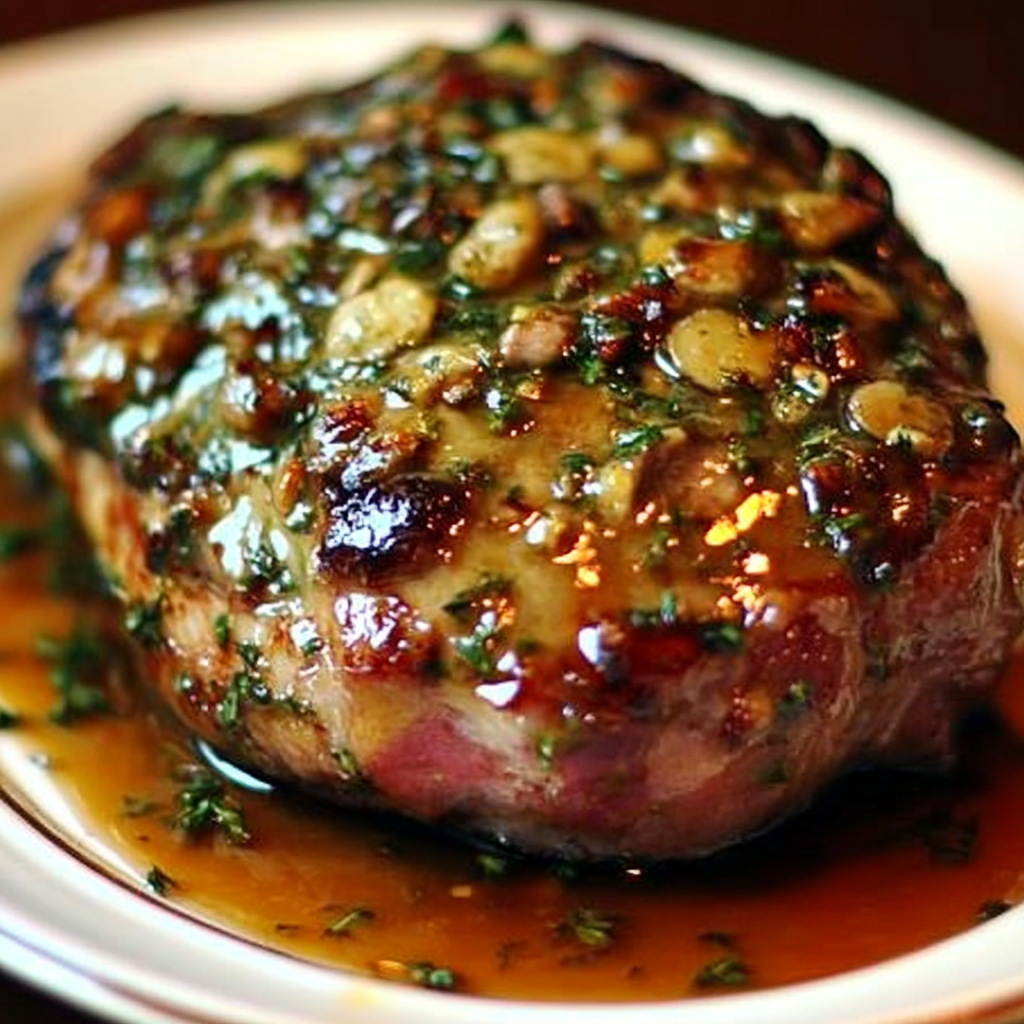
Table of Contents
Understanding Oven-Roasted Lamb Leg with a Sweet and Tangy Honey-Dijon Glaze
What Makes Lamb Leg Special
Lamb leg is one of those cuts that feels both rustic and refined. Unlike lamb chops or shanks, the leg offers a generous amount of meat, making it the centerpiece for family gatherings and holiday feasts. When roasted, it develops a rich outer crust while staying tender inside, perfect for absorbing flavors from marinades and glazes. What makes the oven-roasted lamb leg with a sweet and tangy honey-Dijon glaze truly shine is the balance between savory and sweet. The lamb itself carries earthy, slightly gamey notes, and when paired with the bold mustard kick and mellow honey sweetness, every bite feels like a celebration.
Why Honey-Dijon Glaze Works Perfectly
Pairing lamb with honey and Dijon mustard might sound like a modern twist, but it’s rooted in classic flavor balance. Dijon mustard brings sharpness and tang, honey softens it with sweetness, and together they create a caramelized crust when roasted. As the lamb cooks, the glaze seeps into the meat fibers, ensuring every slice is juicy and flavorful. Unlike heavy marinades that can mask the meat, this glaze enhances the natural richness without overwhelming it.
The Southern Touch on a Classic Dish
Growing up in the South, where slow-cooked meats and bold flavors reign supreme, I learned that food is more than just taste—it’s tradition. When I make oven-roasted lamb leg with a sweet and tangy honey-Dijon glaze, I borrow from both worlds: the elegance of European-style roasts and the Southern tradition of gathering around comforting meals. This combination makes the dish versatile. It’s fancy enough for Easter dinner but cozy enough for a Sunday night with friends.
Nutritional Value of Lamb
Besides taste, lamb also brings solid nutrition to the table. It’s a rich source of high-quality protein, zinc, iron, and vitamin B12. These nutrients support energy, immune function, and overall wellness. For families who value hearty but wholesome meals, lamb is a satisfying alternative to beef or chicken. And when paired with a honey-Dijon glaze, it becomes a guilt-free indulgence that feels both nourishing and decadent.
Discover more about choosing the right lamb cut and cooking techniques in The Food Lab’s Definitive Guide to Buying and Cooking Leg of Lamb by Serious Eats.
Check out my guide on kitchen remodeling if you want tips to make your cooking space as welcoming as your meals.
Choosing the Best Lamb Leg for Roasting
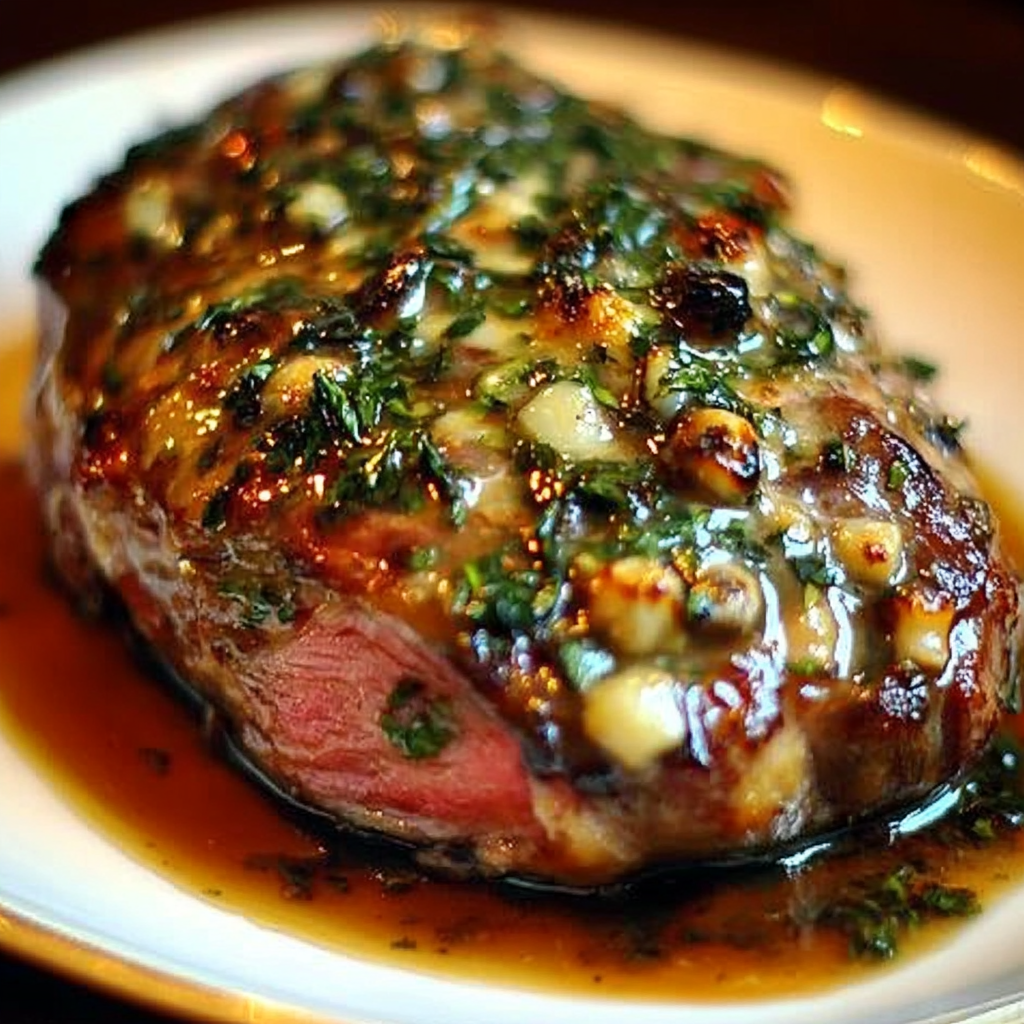
Bone-In vs Boneless Lamb Leg
One of the first decisions you’ll make when preparing oven-roasted lamb leg with a sweet and tangy honey-Dijon glaze is whether to buy bone-in or boneless. Bone-in lamb leg tends to deliver deeper flavor. The bone helps conduct heat during roasting, which can result in juicier meat and a more impressive presentation when brought to the table. On the other hand, boneless lamb leg is easier to carve and slightly faster to cook. Many home cooks love it because it’s flexible—you can roll it, stuff it, or tie it neatly for even roasting.
If you’re hosting a dinner party where presentation matters, bone-in might be the showstopper. But if convenience is what you’re after, boneless is your friend. As with most kitchen choices, it comes down to your priorities: flavor and tradition versus ease and flexibility.
For a detailed comparison, check out The Spruce Eats guide on bone-in vs boneless lamb leg.
Fresh vs Frozen Lamb
Another factor to consider is whether to buy fresh or frozen lamb. Fresh lamb usually offers more delicate flavor and tenderness. Frozen lamb, though, is often more budget-friendly and widely available, especially if you don’t live near a specialty butcher. The key to using frozen lamb is allowing plenty of time for thawing—ideally in the refrigerator for 24 to 48 hours before roasting.
Where to Shop for Quality Lamb
If you’re lucky enough to live near a butcher or a specialty meat shop, you’ll find the best variety of lamb cuts. These places often carry locally sourced lamb, which can have fresher flavor and more sustainable farming practices behind it. Supermarkets usually stock imported lamb, often from Australia or New Zealand, which tends to be leaner and milder in taste compared to American lamb. Both work beautifully, but knowing the difference helps set expectations.
Looking for inspiration? Try exploring best restaurants near me that serve lamb dishes—you’ll discover new flavor combinations and techniques to bring home.
Preparing the Lamb Before Roasting
Trimming and Cleaning the Lamb
Before you even think about glazing, the lamb leg needs a little prep work. Start by patting it dry with paper towels to remove excess moisture. This step helps the glaze stick better and promotes browning in the oven. Next, look at the fat cap. While a layer of fat adds flavor and keeps the meat juicy, too much can result in greasy drippings. Trim the fat down to about ¼ inch. This way, your oven-roasted lamb leg with a sweet and tangy honey-Dijon glaze will have just the right balance of richness without being overwhelming.
Scoring for Flavor
Scoring the lamb—making shallow cuts in a crisscross pattern on the surface—serves two purposes. First, it helps the glaze seep deeper into the meat, infusing flavor throughout instead of just sitting on the surface. Second, it ensures the fat renders evenly while roasting, creating that golden, irresistible crust. Aim for cuts about ¼ inch deep, spaced an inch apart.
Seasoning Before the Glaze
Even with a sweet and tangy glaze, the foundation of flavor comes from proper seasoning. Rub the lamb generously with salt and freshly cracked black pepper. A touch of garlic powder or crushed fresh garlic can also work wonders, pairing beautifully with the Dijon mustard in the glaze. This step creates layers of flavor—savory seasoning, tangy mustard, and sweet honey—that all come together in the final bite.
Marinating vs Direct Glazing
Some cooks prefer to marinate their lamb overnight in olive oil, lemon juice, and herbs before adding the glaze. This gives the meat extra tenderness and depth. Others go straight to applying the honey-Dijon glaze before roasting. Both methods work, but marinating requires planning ahead. If you’re short on time, a quick rub with salt, pepper, garlic, and then a generous coating of the glaze just before roasting will still deliver incredible results.
For professional tips on marinating techniques, check out BBC Good Food’s guide to marinating meat.
Applying the Honey-Dijon Glaze
When applying the glaze, brush it on generously, making sure it seeps into the scored cuts. Some cooks prefer to glaze only at the beginning, while others add more halfway through roasting to build layers of caramelization. If you love a glossy, golden-brown finish, reapplying the glaze during roasting is the way to go.
Don’t miss our feature on best restaurants near me for inspiration on how chefs use glazes to transform classic roasts.
Step-by-Step Roasting Process
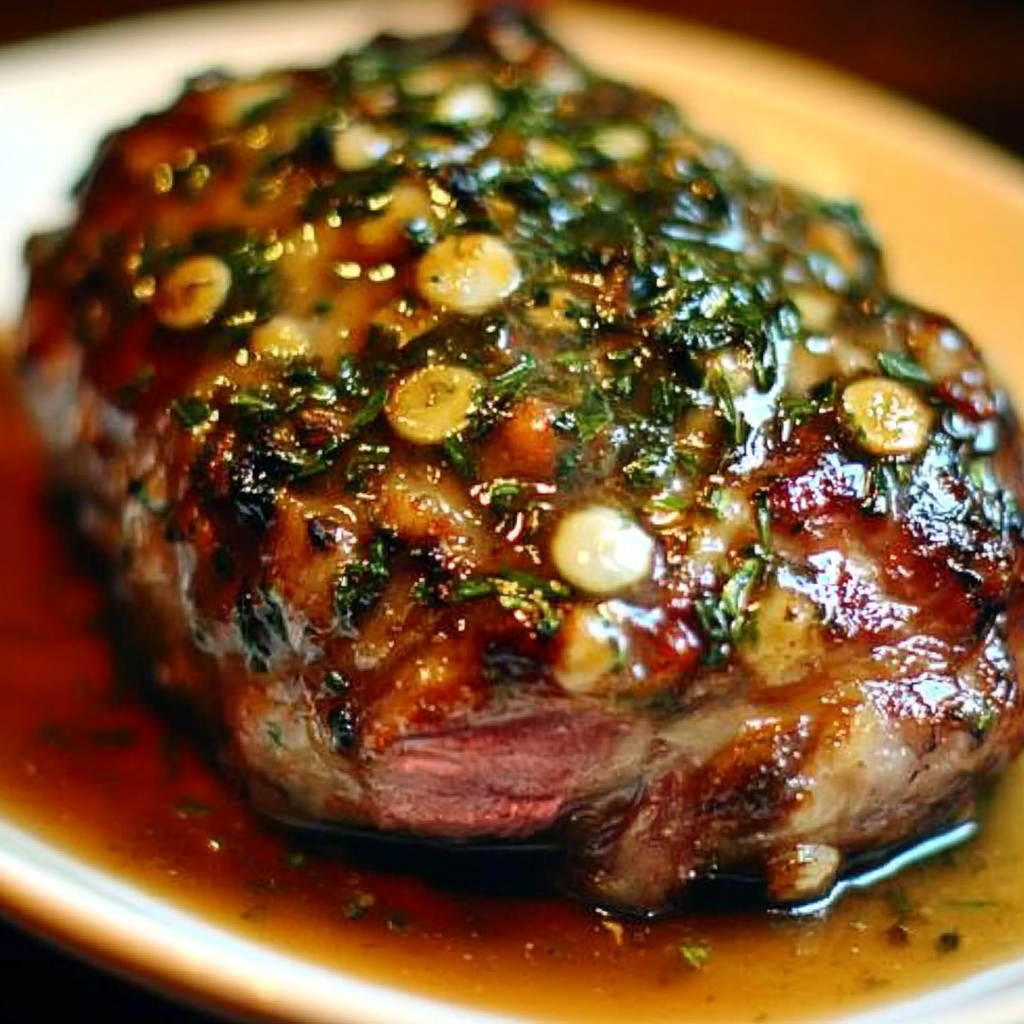
Preheating the Oven
The foundation of any good roast is oven temperature. For lamb leg, preheating to 375°F (190°C) is a sweet spot. It’s hot enough to develop a golden crust, yet gentle enough to keep the inside juicy. If you want to crisp up the outside even more, you can start at 425°F for the first 15 minutes, then lower the temperature for the rest of the cooking time.
Setting Up the Roasting Pan
Choose a sturdy roasting pan with a rack. The rack allows heat to circulate around the lamb, ensuring even cooking and preventing the bottom from getting soggy. Pour about a cup of broth, wine, or water into the pan. This not only prevents drippings from burning but also creates flavorful juices you can use for gravy later.
Cooking Times and Temperatures
Cooking lamb leg depends on its size and whether it’s bone-in or boneless. A general rule is 20 minutes per pound for medium-rare or 25 minutes per pound for medium. Always use a meat thermometer for accuracy:
| Doneness | Internal Temp | Notes |
|---|---|---|
| Rare | 125°F (52°C) | Very pink, tender |
| Medium Rare | 135°F (57°C) | Juicy, slightly pink |
| Medium | 145°F (63°C) | Balanced doneness |
| Well Done | 160°F (71°C) | Fully cooked, less juicy |
Bone-in cuts may need an extra 15–20 minutes compared to boneless.
Glazing During Roasting
For oven-roasted lamb leg with a sweet and tangy honey-Dijon glaze, brushing additional glaze halfway through roasting makes a huge difference. It builds a glossy, caramelized finish and adds depth to the flavor. Be careful not to add too much glaze toward the end, as honey burns quickly.
Resting the Roast
Once your lamb reaches the target temperature, remove it from the oven and let it rest, tented loosely with foil, for at least 15 to 20 minutes. Resting is crucial because it allows the juices to redistribute, giving you tender slices instead of dry meat. Skipping this step is the number one mistake home cooks make.
For more expert insights on roasting techniques, Epicurious offers a detailed guide to roasting meats.
Check out my post on kitchen remodeling for creating a cooking space that makes roasting big meals even easier.
Perfecting the Honey-Dijon Glaze
Core Ingredients of the Glaze
The star of oven-roasted lamb leg with a sweet and tangy honey-Dijon glaze is, of course, the glaze itself. At its heart, it requires just a few pantry staples:
- Honey – Adds sweetness and helps caramelize the crust.
- Dijon mustard – Brings sharpness and tang.
- Olive oil – Ensures smooth texture and helps with roasting.
- Garlic – Freshly minced or powdered, adding depth.
- Herbs – Rosemary, thyme, or oregano complement lamb’s earthy flavor.
- Salt and pepper – Balance and enhance the sweetness and tang.
Mixing these ingredients creates a glaze that’s both simple and sophisticated.
Balancing Sweet and Tangy Flavors
One of the most important parts of creating this glaze is balance. Too much honey, and it can turn cloyingly sweet. Too much Dijon, and it might overpower the lamb. Start with equal parts honey and Dijon, then adjust. Taste as you go—the beauty of this glaze is its flexibility.
Adding Depth with Extras
You can give your glaze a personal twist by adding:
- Balsamic vinegar for extra tang and richness.
- Orange or lemon zest for a citrusy lift.
- Crushed red pepper flakes for subtle heat.
- Soy sauce or Worcestershire sauce for umami depth.
Each variation will slightly alter the personality of your roast, making it your own.
Applying the Glaze Correctly
Apply the first layer of glaze before the lamb goes into the oven, brushing it into the scored cuts for maximum flavor penetration. Then, halfway through roasting, brush on another layer. For the final 10 minutes, you can apply one last light coat and switch to broil for 2–3 minutes if you want extra caramelization. Just watch closely so the honey doesn’t burn.
Using Leftover Glaze
If you prepare extra glaze, don’t discard it. Simmer it gently in a small saucepan until it thickens into a sauce. Serve it on the side for dipping or drizzle it over sliced lamb right before serving.
For more creative glaze variations, check out Delish’s collection of lamb glaze ideas.
Don’t miss our local dining features on best restaurants near me for more inspiration on how chefs balance bold flavors in glazes.
Side Dishes and Pairings
Classic Vegetable Sides
Roasted lamb pairs beautifully with vegetables that balance its rich flavor. Roasted root vegetables like carrots, parsnips, and potatoes caramelize in the oven, echoing the sweetness of the honey in the glaze. Green beans sautéed with garlic or asparagus roasted with olive oil add a crisp, fresh contrast. For a more Southern spin, collard greens or skillet-cooked corn bring comforting familiarity to the table.
Fresh and Bright Salads
To cut through the richness of lamb, a fresh salad can make all the difference. A simple arugula salad with shaved Parmesan, lemon juice, and olive oil is refreshing and tangy. Or try a Mediterranean tabbouleh with parsley, bulgur, and tomatoes to complement the Dijon’s sharpness. Both bring lightness that balances the hearty roast.
Perfect Grain Pairings
Hearty grains like wild rice, couscous, or quinoa are excellent bases for soaking up the juices from your oven-roasted lamb leg with a sweet and tangy honey-Dijon glaze. Couscous with dried apricots and almonds adds both texture and a sweet counterpoint. Quinoa with roasted peppers and herbs provides a nutty, wholesome touch.
Sauces and Gravies
Although the honey-Dijon glaze is the star, a light sauce on the side can elevate the experience. A red wine reduction, mint chimichurri, or even a yogurt-based herb sauce offers fresh layers of flavor. These sauces allow guests to customize each bite, making the meal interactive and personal.
Wine and Beverage Pairings
Wine pairing is where lamb truly shines. A bold red like Cabernet Sauvignon or Syrah complements the glaze’s tang and the meat’s richness. If you prefer white, go for a full-bodied Chardonnay. Non-alcoholic options like sparkling water with citrus slices or pomegranate spritzers add festivity without overpowering the flavors.
For a guide to pairing lamb with wine, explore Wine Enthusiast’s expert recommendations.
Discover great ideas like hosting family-style dinners from my feature on kitchen remodeling, where I share how to create spaces designed for gathering and entertaining.
Common Mistakes to Avoid When Roasting Lamb
Skipping the Meat Thermometer
One of the biggest mistakes home cooks make is relying on guesswork instead of using a meat thermometer. Lamb can go from perfectly juicy to overcooked in just a few minutes. A thermometer ensures you hit the right internal temperature, whether you want medium-rare or medium doneness.
Over-Trimming or Under-Trimming Fat
Trimming too much fat strips away flavor and moisture, while leaving too much results in greasy, chewy bites. The sweet spot is about a quarter inch of fat. This allows the oven-roasted lamb leg with a sweet and tangy honey-Dijon glaze to self-baste during cooking while still achieving that rich crust.
Adding Glaze Too Early or Too Late
Glaze timing matters. Applying too much glaze at the beginning can cause it to burn due to the honey content. Waiting until the very end, however, means you miss out on layers of flavor. The best approach is to glaze at the start, reapply halfway, and finish with a light coat during the final 10 minutes.
Forgetting to Rest the Meat
Resting isn’t optional—it’s essential. Cutting into lamb immediately after roasting causes the juices to spill out onto the cutting board instead of staying in the meat. Always let it rest for at least 15–20 minutes under a foil tent. This small step makes a huge difference in tenderness and flavor.
Not Considering Pan Juices
Many cooks discard pan drippings, but they’re liquid gold. Combined with a little broth or wine, they can be turned into a sauce or gravy that perfectly complements the honey-Dijon glaze. Skipping this step means missing out on one of the most flavorful parts of the meal.
For more roasting advice, check out The Kitchn’s guide to common roasting mistakes.
Looking for inspiration? Try browsing best restaurants near me that specialize in roasts to see how professionals achieve consistency every time.
Serving and Presentation Tips
Carving the Lamb Leg
Carving is just as important as roasting. Always slice against the grain to ensure tenderness. With a bone-in leg, start by cutting parallel to the bone, then carve thin slices for serving. For boneless, cut even slices across the roast for a uniform presentation. A sharp carving knife makes all the difference, so make sure your tools are ready before guests arrive.
Plating for Impact
The oven-roasted lamb leg with a sweet and tangy honey-Dijon glaze deserves a presentation that matches its flavor. Arrange slices on a large platter and drizzle lightly with pan juices or leftover glaze. Surround the meat with roasted vegetables for color contrast, or garnish with fresh rosemary sprigs and lemon wedges to add brightness.
Family-Style vs Individual Plates
For holidays and gatherings, serving family-style creates a warm, communal atmosphere. Place the platter in the center of the table and let guests serve themselves. For more formal dinners, plate individual portions with sides already arranged. Both approaches work, but family-style emphasizes the comfort and togetherness that make this dish special.
Garnishes that Elevate the Dish
Small details make a big difference. Sprinkle pomegranate seeds for a pop of color and tartness. Add fresh mint leaves or microgreens for elegance. Even a simple dusting of sea salt flakes at the end can bring out the glaze’s sweet and tangy balance.
Pairing with the Right Setting
The atmosphere adds to the experience. A rustic wooden board, vintage platters, or modern white plates all change how the dish feels. Soft lighting, cloth napkins, and a good playlist turn a lamb dinner into a memory. Food presentation is as much about mood as it is about plating.
For more plating inspiration, check out Bon Appétit’s guide to restaurant-style plating at home.
FAQs About Oven-Roasted Lamb Leg with a Sweet and Tangy Honey-Dijon Glaze
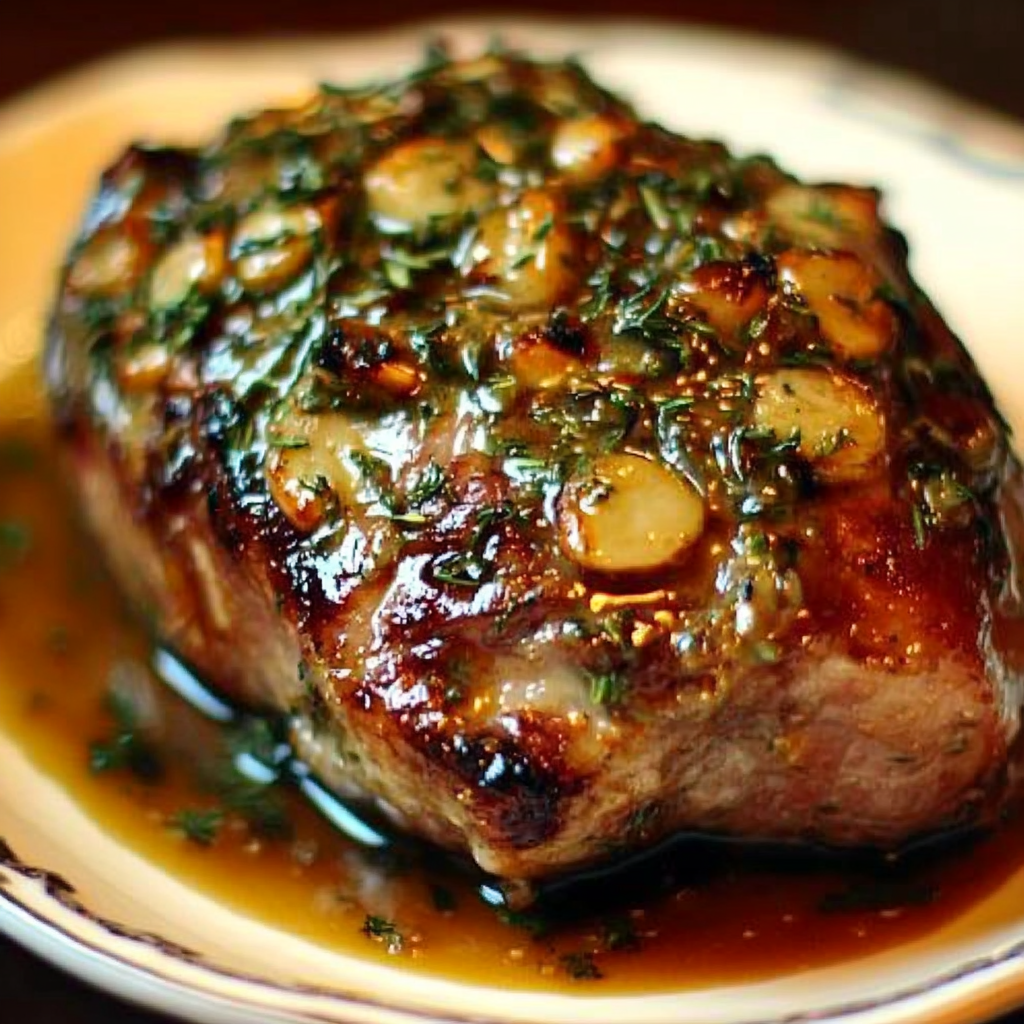
How long should I roast a lamb leg in the oven?
Cooking time depends on the size and whether it’s bone-in or boneless. A good rule of thumb is 20 minutes per pound for medium-rare or 25 minutes per pound for medium. Always use a meat thermometer for accuracy.
Should I cover the lamb leg while roasting?
It’s best to roast uncovered so the glaze can caramelize and the surface can brown. If you notice the glaze starting to darken too quickly, tent the lamb loosely with foil for the last part of roasting.
Can I prepare the honey-Dijon glaze ahead of time?
Yes, the glaze can be mixed up to three days in advance and stored in the refrigerator. Just bring it to room temperature before applying so it spreads easily.
What wine pairs best with honey-glazed lamb leg?
Bold reds like Cabernet Sauvignon, Syrah, or Malbec pair beautifully. For white wine drinkers, a full-bodied Chardonnay balances the tang of the Dijon and the sweetness of honey.
Can I freeze leftover roasted lamb leg?
Absolutely. Slice the lamb into portions, wrap tightly in foil, and place in a freezer bag. Properly stored, it will last for up to three months. To reheat, thaw overnight in the fridge and warm gently in the oven.
How do I keep lamb leg from drying out?
Don’t overcook it, and always let it rest before slicing. Adding a bit of broth or wine to the roasting pan also helps keep the meat moist, while glazing during roasting locks in flavor and juiciness.
Conclusion
Cooking isn’t just about recipes, it’s about connection. This oven-roasted lamb leg with a sweet and tangy honey-Dijon glaze brings together tradition, flavor, and the joy of sharing a meal. From trimming and seasoning, to slow roasting and glazing, every step is a chance to create something memorable. Pair it with your favorite sides, carve it with care, and let the aroma fill your home.
Whether you’re cooking for a holiday feast or a simple Sunday dinner, this dish proves that you don’t need culinary school or fancy tools to put love on the table. Just a little time, patience, and heart. And when your family and friends gather around, taking that first bite, you’ll know the effort was worth it.
